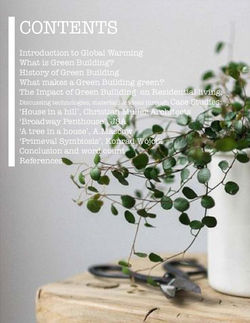 |  |  |
|---|---|---|
 |  |  |
 |  |  |
 |  |  |
The Amphibious house, or the 'Lillypad' as we nicknamed it, is a prototype design for future development in an environment were the rise of shorelines due to global warming threatens the likelihood of land availability.
The design addresses how occupants may still be able to continue to sustain themselves here after with solar and wind power alternatives and the ability to produce their own produce.
The design also allows for multiple houses to connect beside each other with the intention of encouraging communities to form for a better way of life.
The 'Lilypad' also suggests that occupants can live harmoniously with the environment while also still living quite luxuriously.
One of the key features of the building's design are the piston-like 'dolphins' that are embedded into the ocean floor. Within these shafts sit the structure's legs that allow the body of the house to move up and down smoothly with the rise and fall of the tides. These allowed the structure to stay in place without fear of a capsize or flooding.
AMPHIBIOUS HOUSE
2016
It also features solar glass windows which are see-through panels wired with photovolatics which allow the windows covering the building to absorb solar energy that can be used to power the household.
These panels are also fitted with switchable smart glass which allows occupants to control the amount of visibility and privacy within the household at will. This feature can also control glare and reduce thermal gain within the building, reducing internal energy use even further.
A roof top garden allows occupants to grow their own produce and includes a skylight door that allows plants natural light within the building so all areas of the structure are put to use, even the stair well.
This skylight is further designed to collect rainfall to be used as both water for the household and plant growth.
Finally, set onto the bottom of the structure is a hydroelectric power system that allows the push and pull of the ocean's tides to generate further power for the household. This system is also used as a data collector for the household and any scientists for further research concerning the environment and any future global warming.
THE CONCEPT PROCESS:
CASE STUDIES + REPORT
 |  |  |
|---|---|---|
 |  |  |
 |  |  |
 |  |  |
 |  |  |
 |  |  |
 |  |  |
 |  |  |
 |  |
MATERIALITY

Herbs + Vegetables


Dulux

Locally Sorced
